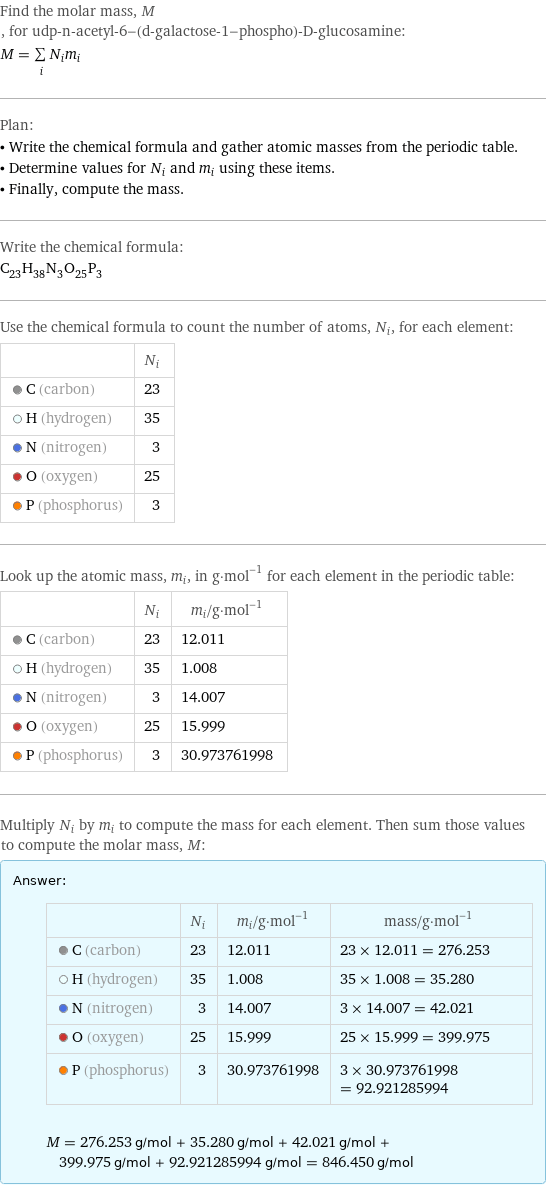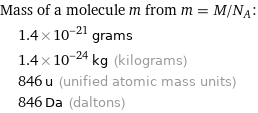Input interpretation

udp-n-acetyl-6-(d-galactose-1-phospho)-D-glucosamine | molar mass
Result

Find the molar mass, M, for udp-n-acetyl-6-(d-galactose-1-phospho)-D-glucosamine: M = sum _iN_im_i Plan: • Write the chemical formula and gather atomic masses from the periodic table. • Determine values for N_i and m_i using these items. • Finally, compute the mass. Write the chemical formula: C_23H_38N_3O_25P_3 Use the chemical formula to count the number of atoms, N_i, for each element: | N_i C (carbon) | 23 H (hydrogen) | 35 N (nitrogen) | 3 O (oxygen) | 25 P (phosphorus) | 3 Look up the atomic mass, m_i, in g·mol^(-1) for each element in the periodic table: | N_i | m_i/g·mol^(-1) C (carbon) | 23 | 12.011 H (hydrogen) | 35 | 1.008 N (nitrogen) | 3 | 14.007 O (oxygen) | 25 | 15.999 P (phosphorus) | 3 | 30.973761998 Multiply N_i by m_i to compute the mass for each element. Then sum those values to compute the molar mass, M: Answer: | | | N_i | m_i/g·mol^(-1) | mass/g·mol^(-1) C (carbon) | 23 | 12.011 | 23 × 12.011 = 276.253 H (hydrogen) | 35 | 1.008 | 35 × 1.008 = 35.280 N (nitrogen) | 3 | 14.007 | 3 × 14.007 = 42.021 O (oxygen) | 25 | 15.999 | 25 × 15.999 = 399.975 P (phosphorus) | 3 | 30.973761998 | 3 × 30.973761998 = 92.921285994 M = 276.253 g/mol + 35.280 g/mol + 42.021 g/mol + 399.975 g/mol + 92.921285994 g/mol = 846.450 g/mol
Unit conversion

0.8465 kg/mol (kilograms per mole)
Comparisons

≈ 1.2 × molar mass of fullerene ( ≈ 721 g/mol )

≈ 4.4 × molar mass of caffeine ( ≈ 194 g/mol )

≈ 14 × molar mass of sodium chloride ( ≈ 58 g/mol )
Corresponding quantities

Mass of a molecule m from m = M/N_A: | 1.4×10^-21 grams | 1.4×10^-24 kg (kilograms) | 846 u (unified atomic mass units) | 846 Da (daltons)

Relative molecular mass M_r from M_r = M_u/M: | 846